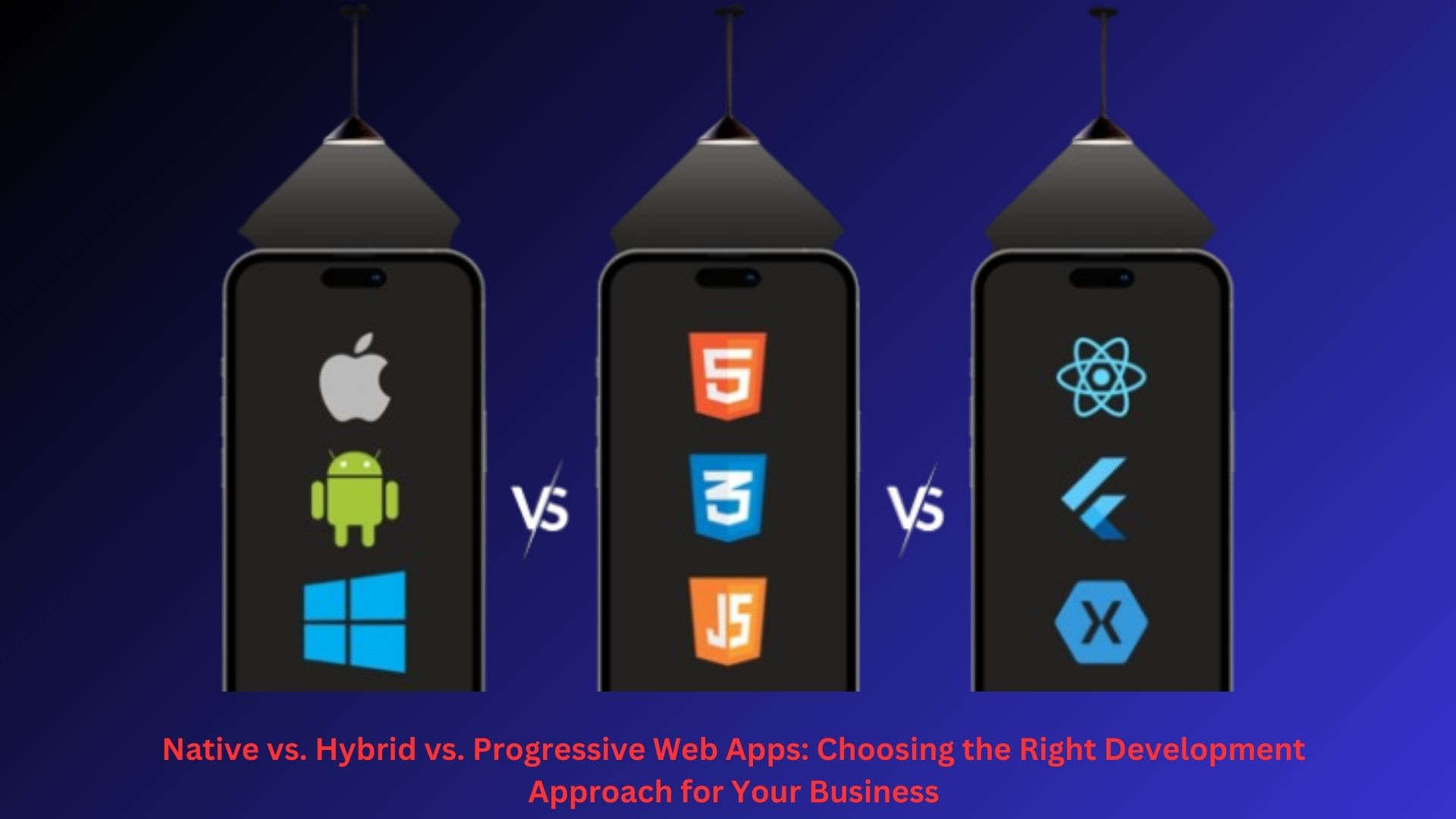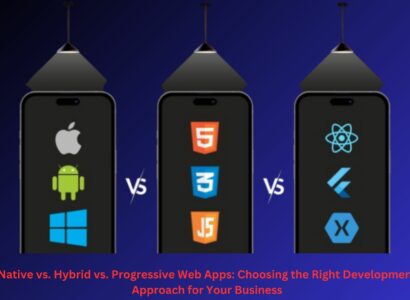Mobile applications are an inseparable part of routine life. People utilize different apps in their daily lives. Several mobile application development companies provide feature-rich and optimized solutions. Mobile app development services follow a defined process of developing software solutions that can efficiently run on mobile devices like Android and iOS. Usually, a typical smartphone app utilizes a mobile network connection to operate with remote computing resources.

In this post, we will learn about Native, Hybrid, and PWAs and their distinctive features. Each has advantages and disadvantages based on user experience, usability, compatibility, and development.
Quick Comparison of Native vs. Hybrid vs. Progressive Web Apps
Developers have diverse experience and expertise in the development process of mobile apps. Native apps can be created for a specific device and operating system. It ensures smooth performance and requires a separate codebase for different platforms. On the other hand, Hybrid applications provide apps for multiple platforms with a single codebase. Creating a separate app for a specified platform saves time and effort. A progressive web app (PWA) is built using web technologies. But it provides a native-like feel and user experience. A progressive web app development service ensures that apps can efficiently run on multiple platforms and devices with a single codebase.
Let’s understand each one of them based on the specific criteria:
| NATIVE APP | HYBRID APP | PROGRESSIVE WEB APP (PWA) | |
| Technology Utilized | It uses languages based on particular platforms (Java/Kotlin for Android, Swift for iOS) | It uses a combination of different web technologies (HTML, CSS, JavaScript) and native elements | It utilizes diverse web technologies (HTML, CSS, and JavaScript) |
| Performance | Good performance, specifically optimized for specific platforms | Good performance but generally lower than native apps | Performance varies but generally good, which is specifically depends on the browser and device |
| Device Feature Access | It provides full access to device capabilities and features | It provides more features than PWAs but less than native apps | It has limited features compared to native and hybrid apps |
| Development & Maintenance | It is resource-intensive, with a separate codebase created for each platform | It is less resource-intensive compared to native But with a single codebase for different platforms | It provides easier updates and less resource-intensive, with a single web-based codebase |
| Distribution | These apps can be downloaded through app stores ( Google Play, Apple App Store) | These apps can be downloaded through app stores, just like they are in native apps | Directly via the web, no distributions on the app stores |
| Offline Capabilities | Strong offline capabilities and can offer offline functionalities | Moderate offline capabilities depend on the app’s implementation | Offline capabilities are available but limited as compared to native apps |
| User Experience | High user experience with smooth and responsive, adheres to platform UI standards) | It provides a smooth user experience, but it can vary across devices and platforms | User experience varies, and it aims to provide a native-like app experience |
| Search Engine Discoverability | It is not applicable as search engines do not index apps because it is available on app stores. | Not applicable for this as various search engines do not index apps | Search engines index high search engine discoverability as PWAs |
In-depth Comparison
After understanding the primary differences between native, Hybrid, and PWAs, we will examine each one’s key features and characteristics. With their diverse capabilities, developers can select the platform and type of application they want to create.
Native
Native applications are tailored mobile apps built for a specific platform and devices like Android, iOS, or desktops by utilizing native development tools and technologies. These types of applications can be easily downloaded on the device. As the mobile app segment expands, Objective C and Java have been replaced by Swift(iOS) and Kotlin(Android). This approach helps developers create optimized and feature-rich applications by leveraging the capabilities of the platform from an expert Native mobile app development company.
Pros
- Faster app performance that delivers a smooth user experience.
- It delivers optimized performance with a responsive app.
- Native provides extensive access to the device’s capabilities and features.
- Device-specific features and functionalities can be added.
Cons
- These apps can be expensive and time-consuming compared to other approaches.
- It requires a separate codebase for different platforms.
When to use:
- Developers can write code for a single platform by utilizing hardware features.
- Providing the best user experience by eliminating complex features.
- It can be best suited for 3D games and apps with animations.
- When a business requires high-performance and platform-specific features.
- It is most suitable when targeting a specific platform.
- When dealing with sensitive data, this is the most preferable approach as it ensures data safety and security.
- When long-term growth and scalability are required.
Hybrid
Hybrid applications are a combination of native and web apps. These apps are created using cross-platform languages such as CSS, JavaScript, and HTML. These apps are managed through a single codebase, a critical key highlighting features of the hybrid app development process. Every platform differs from the others, providing a diverse performance and user experience. Still, these apps can suffer in performance and user experience because their development is not natively designed for Android and iOS platforms. So, it depends on the business’s requirements on which mobile app development service to choose.
Pros
- Single codebase for different platforms.
- It provides a faster time to market the solution.
Cons
- It has a comparatively slow loading speed as compared to other applications.
- It compromises the performance of the solution based on the device selected.
When to use:
- When a business has a simple project based on the content, which means no animations/ less animations required without complex features.
- When an app is required to be released on Android and both iOS.
- When businesses require less native components.
- Testing a project idea or creating an MVP (minimum viable product).
- When cross-platform compatibility requires.
- When there is less budget and a project timeline is also less.
Progressive Web Apps
PWAs (Progressive Web Apps) work in a web browser but provide a native-like feel and experience that enhances the user experience. These apps can work offline and efficiently be installed on the required platform or device.
Pros
- It ensures faster time to market.
- It provides push notifications and real-time alerts.
- It provides native-like features and performance.
Cons
- These apps are not compatible with some in-built device features.
- It is limited to Apple devices.
When to use:
- When a business requires a robust e-commerce experience.
- When higher traffic is required and available on all devices.
- Apps requiring offline functionalities and real-time updates.
- Businesses looking to expand brand experience across web and mobile operating systems and platforms.
Conclusion
We are aware that selecting between native, hybrid, or PWA applications can be challenging, as each has pros and cons. Before choosing which app categories best fits your needs, you should assess your company’s requirements. The decision you make will depend on your company’s demands. By thoroughly examining your budget and business, mobile and web development companies can assist you in determining which course of action is ideal for your organization.


